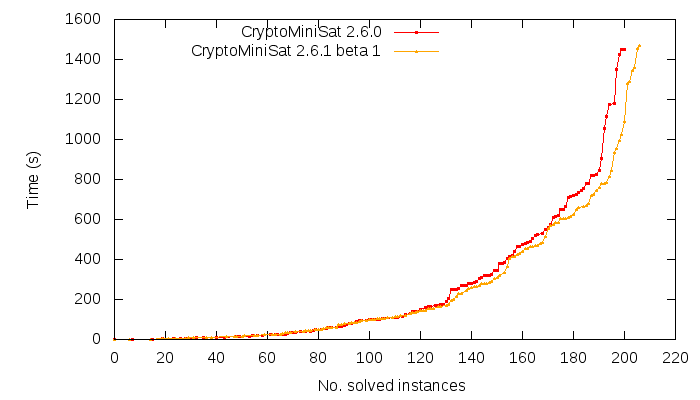The title may be a bit long, but its essence is very simple: we try to shorten learnt clauses. The basic idea was described in this post: there is a clause we just derived, e.g.
d V -e V f V g (1)
where d,e,f,g are binary variables, - is binary negation, and V is the binary OR operator. We can remove a literal from this using self-subsuming resolution with e.g. the 2-long clause:
f V -g (2)
removing g from clause (1). This has been achieved before using on-the-fly self-subsuming resolution. The trick we add now is the following. Let’s assume that clause (2) was not in the clause database. With the above technique, g would not be removed. However, if clauses:
f V a
-a V -g
are inside the clause database, we could, in fact, remove g, since the above two clauses, when we resolve them on a become:
f V -g
i.e. clause (2), what we have been searching for! So, how could we do this kind of reasoning efficiently? It turns out that this is not so difficult. We simply need to try to propagate -f using only the 2-long clauses. Then, we will reach -g through the intermediary, a.
Naturally, we can do the above recursive-propagation process not only for f but for all literals in the original clause (1), and then try to perform on-the-fly self-subsuming resolution, as before. There is only one catch: doing this kind of recursive propagation on all 2-long clauses for all literals in a clause is too time-consuming. So we only do it for clauses that are short: 5 literals or shorter. The results are in, and seem to indicate that transitive on-the-fly self-subsuming resolution with a limit of 5-long clauses is indeed viable:
The set of problems used were those of the SAT Competition 2009, and the time limit was 1500 seconds on some powerful machines — they are approx 2x as fast as those used in the competition. As you can see, transitive OTF self-subsuming resolution seems to pay off in terms of number of problem instances solved within a certain time limit. I have decided to add this feature to the upcoming CryptoMiniSat 2.6.1, which should be ready soon.
